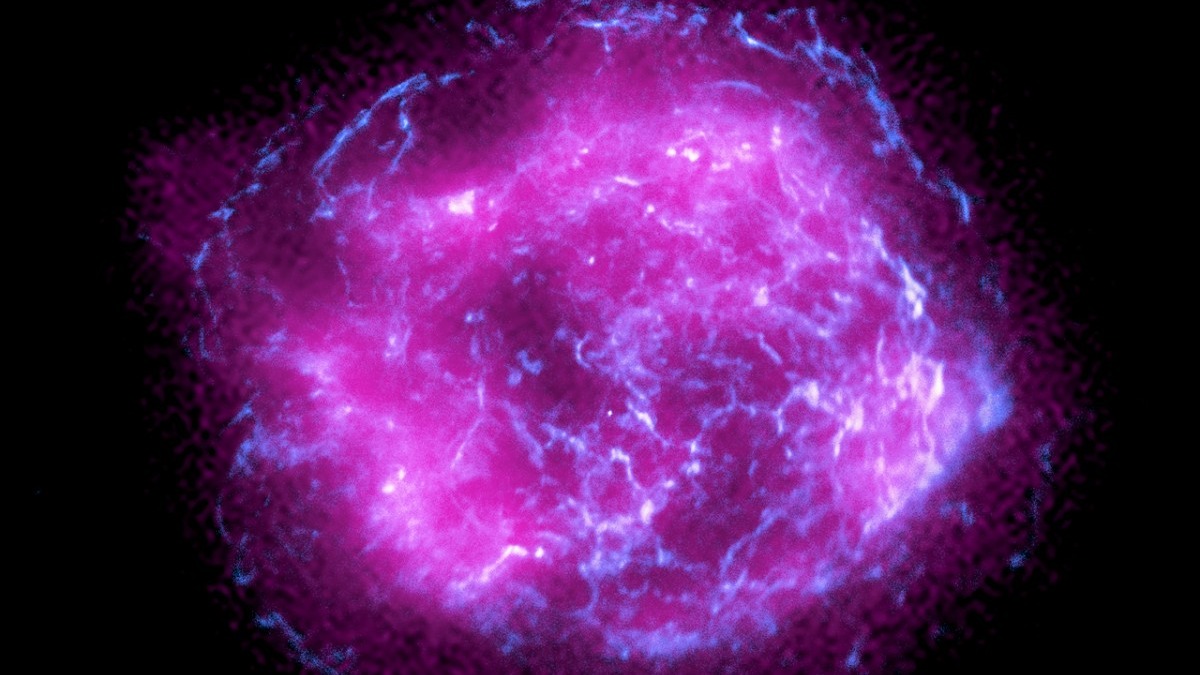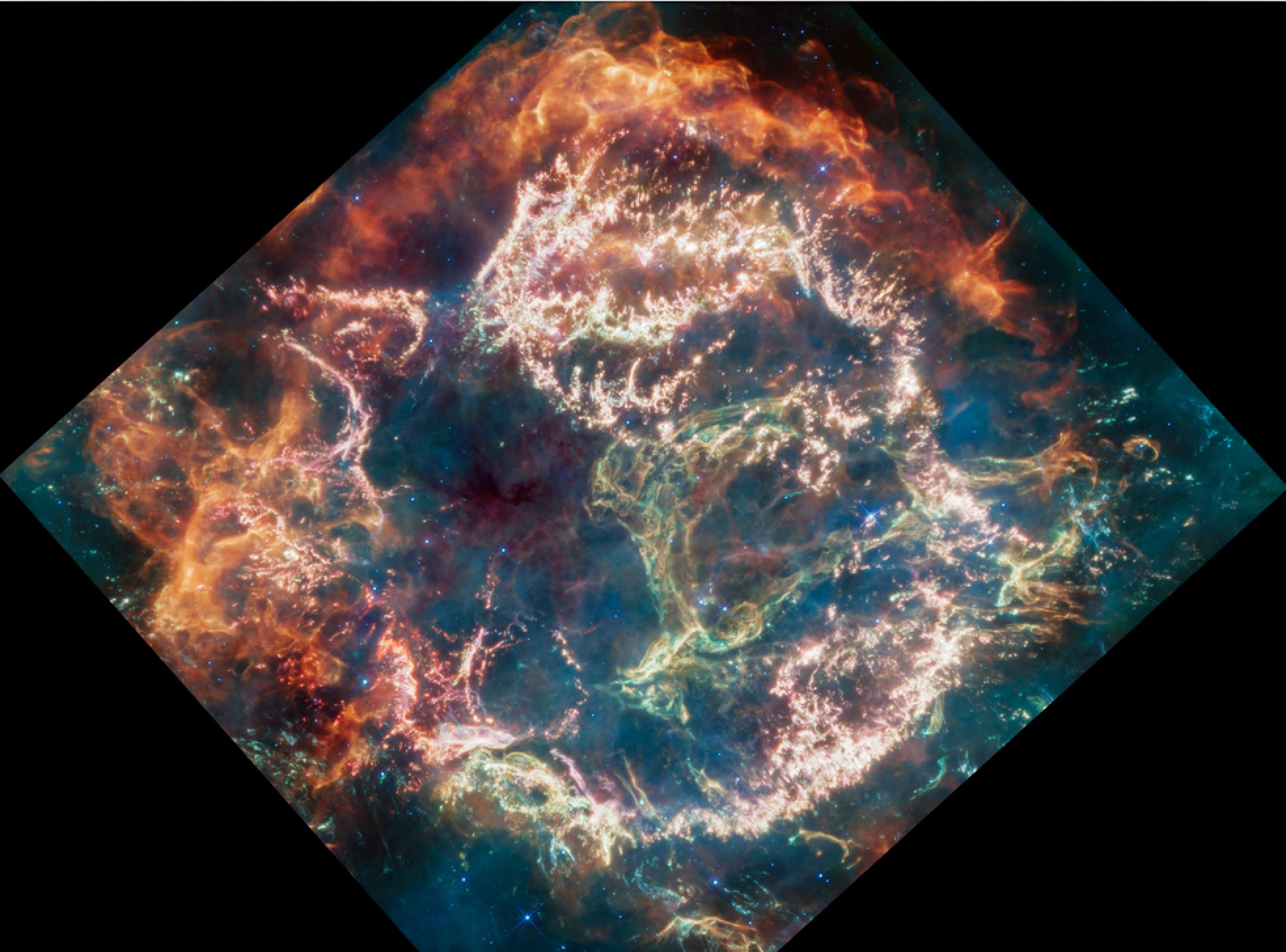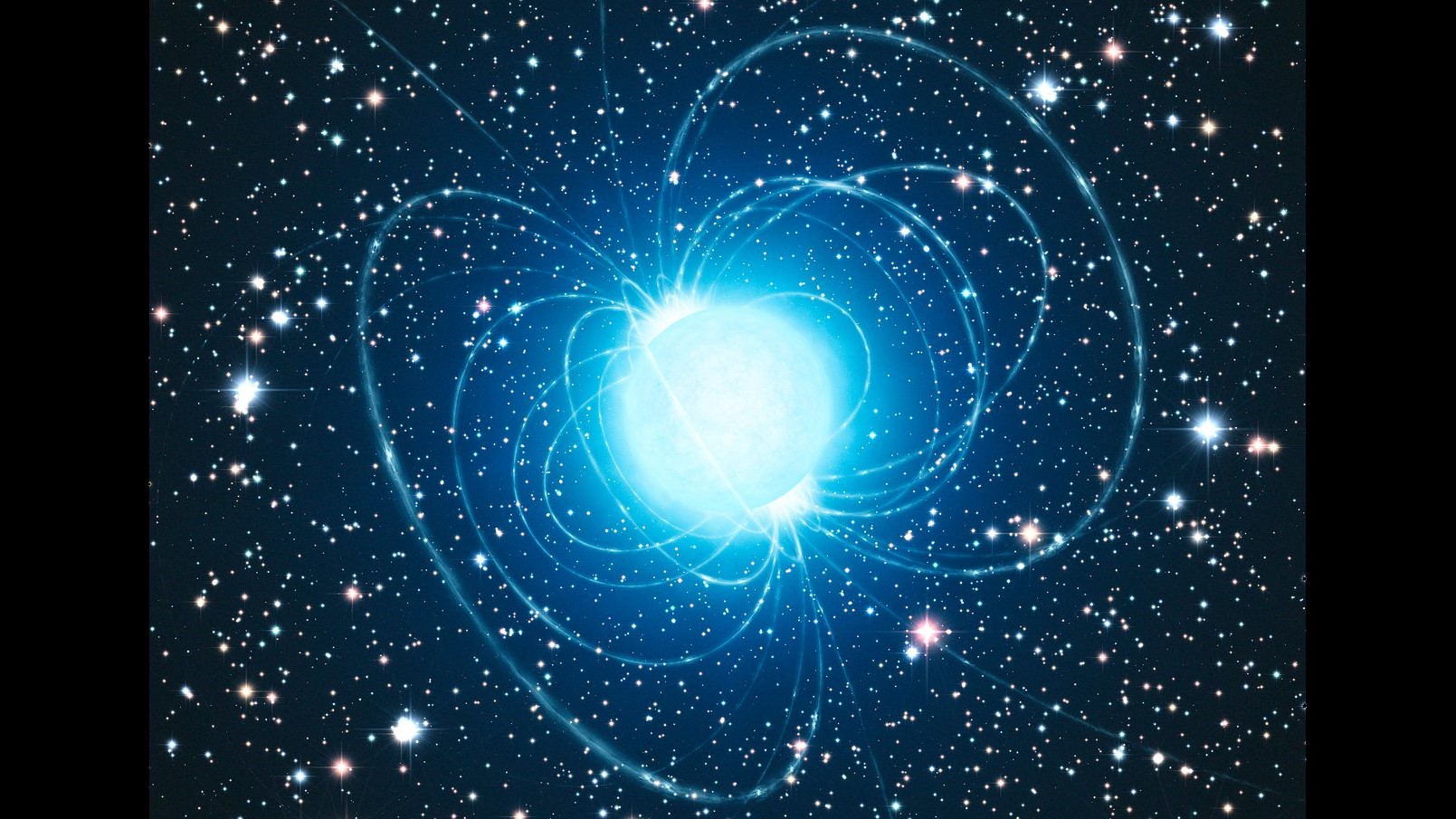Supernova explosion's weird leftovers may contain a super-dense star
'We see a beautiful effect that is a manifestation of intricate, fundamental physics.'

An unexpected effect sighted in supernova wreckage may be caused by a highly magnetized neutron star, or magnetar, and quantum activity never seen before.
Like all neutron stars, magnetars form when massive stars end their lives in a collapse that also triggers a massive supernova explosion. The matter that composes neutron stars is so dense that a sugar cube of it would weigh over a billion tons on Earth. The magnetic fields around these star remnants are the most powerful in the known universe, often 100 trillion times stronger than that of our planet.
As such neutron stars and magnetars represent the most extreme celestial objects, the investigation of them is vital to better understanding the universe. The new study, published April 18 in the journal Proceedings of the National Academy of Sciences, examines the remnants surrounding the supernova leftovers of Cassiopeia A. The explosion was visible to Earth 340 years ago.
Related: Why magnetars should freak you out
Astronomers have always suspected that magnetars would generate highly polarized X-rays around them, meaning that the electromagnetic field of the magnetars' radiation vibrates in a preferred direction.
But, scientists were surprised in 2022 when data collected by NASA's Imaging X-ray Polarimetry Explorer (IXPE) satellite, which launched the year before, showed polarization may depend on energy. IXPE information suggested that may be the case after looking at X-rays in the supernova remnant Cassiopeia A around the magnetar 4U 0142+61, located 13,000 light-years away.
As the first-ever measurement of the polarization of X-rays around a magnetar, the IXPE observations showed that lower energy X-rays were polarized at 180 degrees to the high-energy X-rays. Both energetic ray sets were oriented at 90 degrees to the electromagnetic field of the magnetar.
Get the Space.com Newsletter
Breaking space news, the latest updates on rocket launches, skywatching events and more!
"Photon metamorphosis," meaning the transformation of X-ray photons into electrons and positrons, may be able to explain the weird behavior of X-rays around magnetars, Cornell University astrophysics professor Dong Lai said in a May 4 statement. "Photon metamorphosis" is an element of quantum electrodynamics (QED) , which is a field of physics examining subatomic interactions between electrons and photons.
"In this observation of radiation from a faraway celestial object, we see a beautiful effect that is a manifestation of intricate, fundamental physics," Lai said. "QED is one of the most successful physics theories, but it had not been tested in such strong magnetic field conditions."
Related: Bizarre object 10 million times brighter than the sun defies physics, NASA says

QED predicts that as X-ray photons leave the tenuous atmosphere of a neutron star's surrounding plasma — hot and magnetized gas — the photons pass through a phase called vacuum resonance.
Lai said that in this phase, photons that have no electric charge could convert into a virtual pair of particles (an electron and a positron) that have equal and opposite charges but still combine to a net zero charge. Because they have a charge, however, these particles are influenced by the magnetar's powerful magnetic field. The polarity could therefore cause high-energy X-rays to swing 90 degrees relative to low-energy X-rays.
"You can think about the polarization as two flavors of photons," Lai continued. "A photon suddenly converting from one flavor to another — you don't usually see this kind of thing. But it's a natural consequence of the physics, if you apply the theory under these extreme conditions."

When IXPE examined another magnetar called 1RXS J170849.0–400910, with an even more powerful magnetic field, the same "swing" in the polarization of low and high energy X-rays was not spotted. Lai said that his calculations can account for this; they suggest vacuum resonance and photon metamorphosis would occur very deep inside such a neutron star.
As well as potentially explaining the strange polarization of X-rays seen around 4U 0142+61, Lai said that his interpretation of IXPE data helps constrain the strength of its magnetic field and the rate at which it rotates. The findings also suggest that the atmosphere of this magnetar is composed in part of ionized heavy elements.
Lai said the study of neutron stars helps scientists better understand the physics of matter in conditions that couldn't ever be simulated ever on Earth, meaning it adds to our understanding of the universe's beauty and diversity.
"The observations by IXPE have opened a new window for studying the surface environment of neutron stars," Lai said. "This will lead to new insights into these enigmatic objects."
Join our Space Forums to keep talking space on the latest missions, night sky and more! And if you have a news tip, correction or comment, let us know at: community@space.com.

Robert Lea is a science journalist in the U.K. whose articles have been published in Physics World, New Scientist, Astronomy Magazine, All About Space, Newsweek and ZME Science. He also writes about science communication for Elsevier and the European Journal of Physics. Rob holds a bachelor of science degree in physics and astronomy from the U.K.’s Open University. Follow him on Twitter @sciencef1rst.









